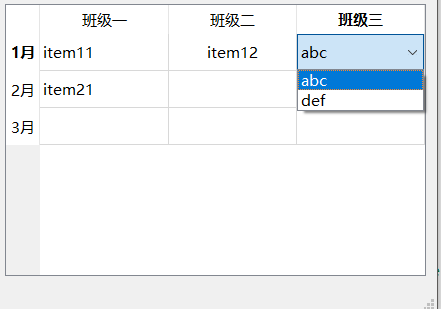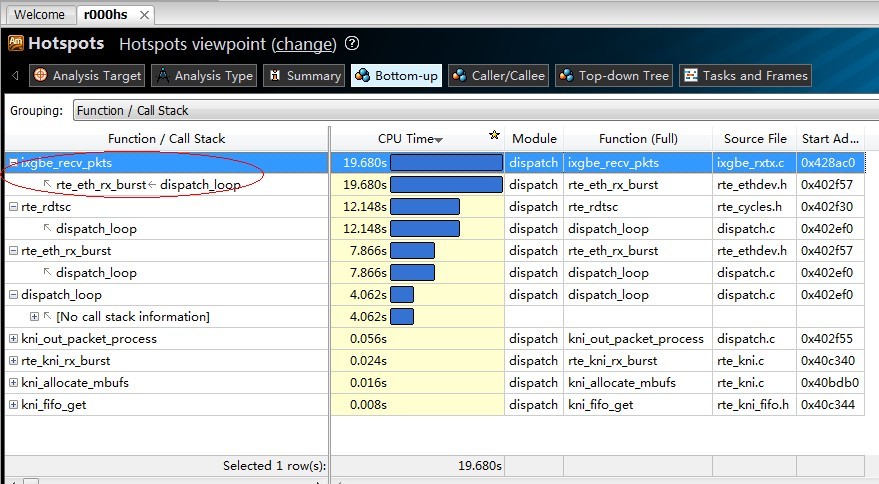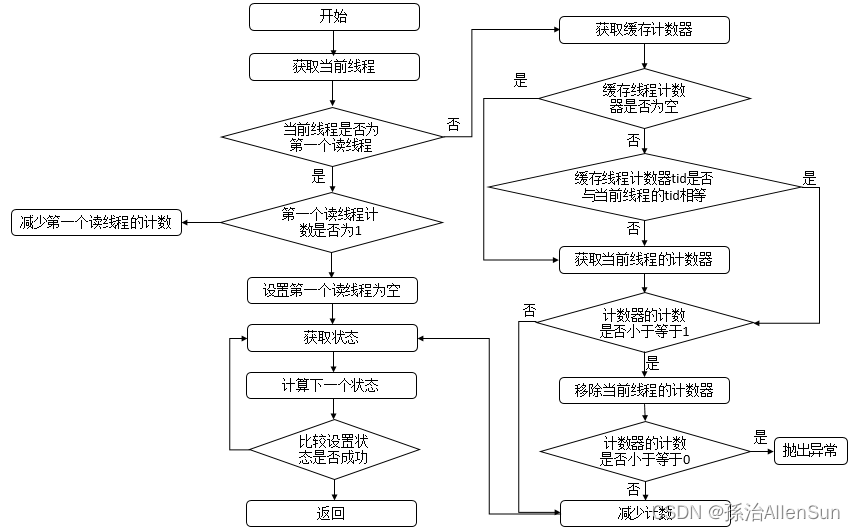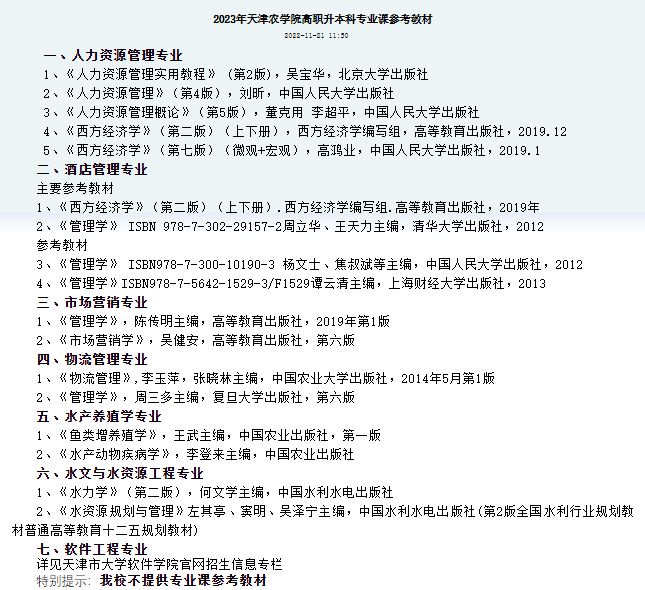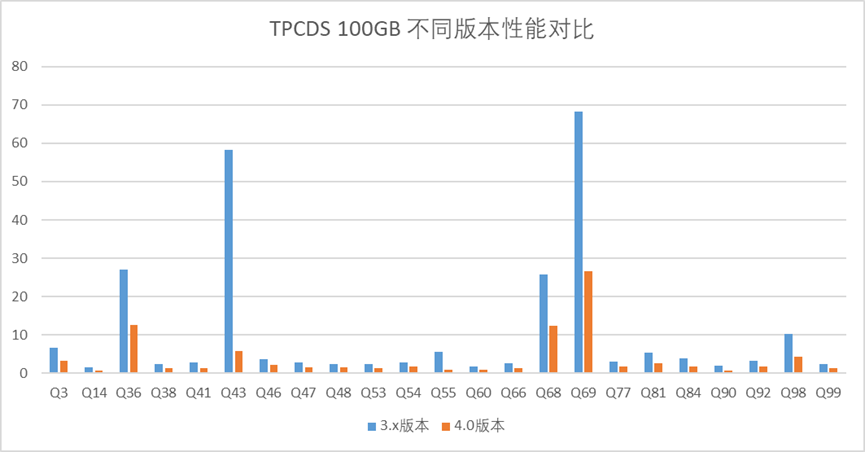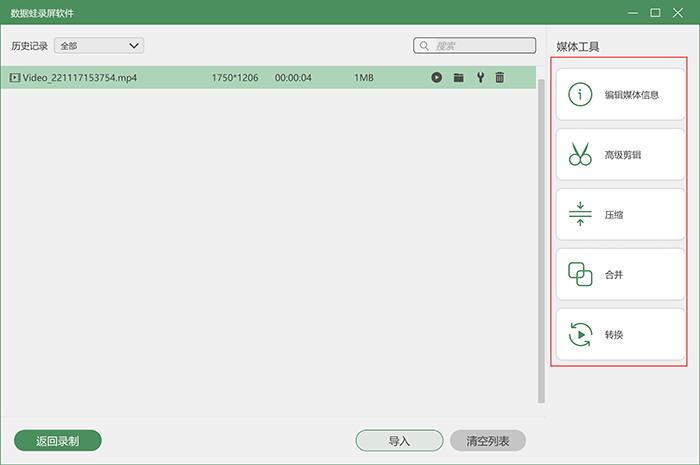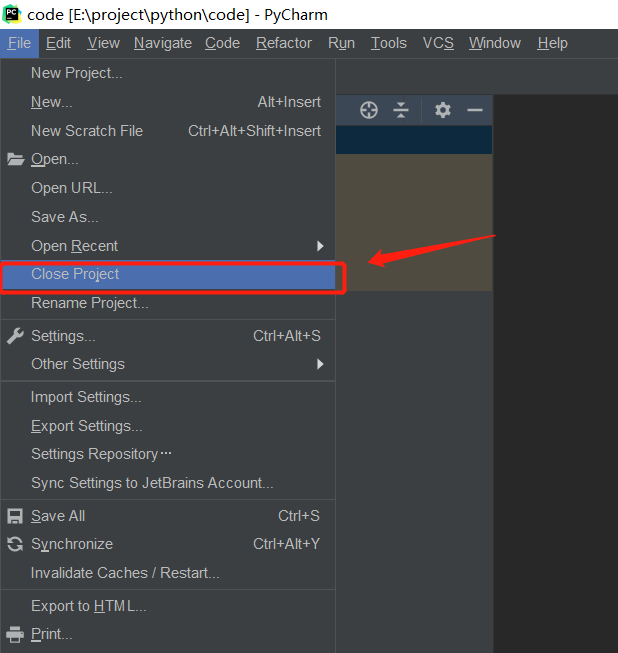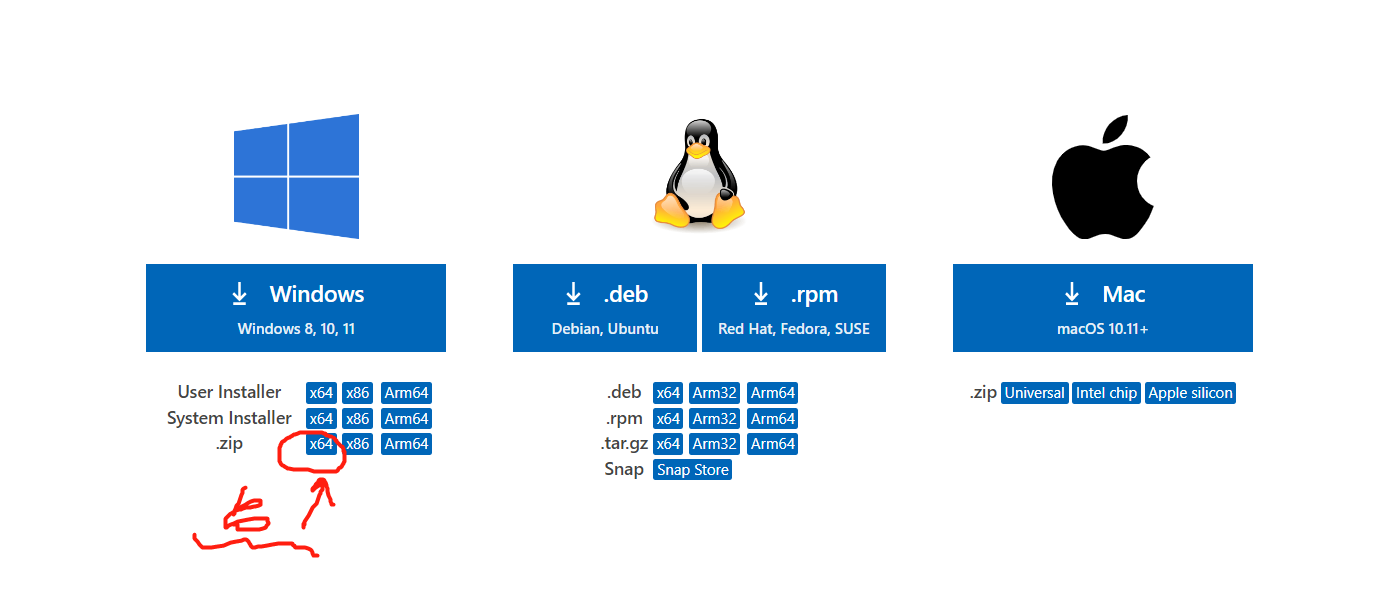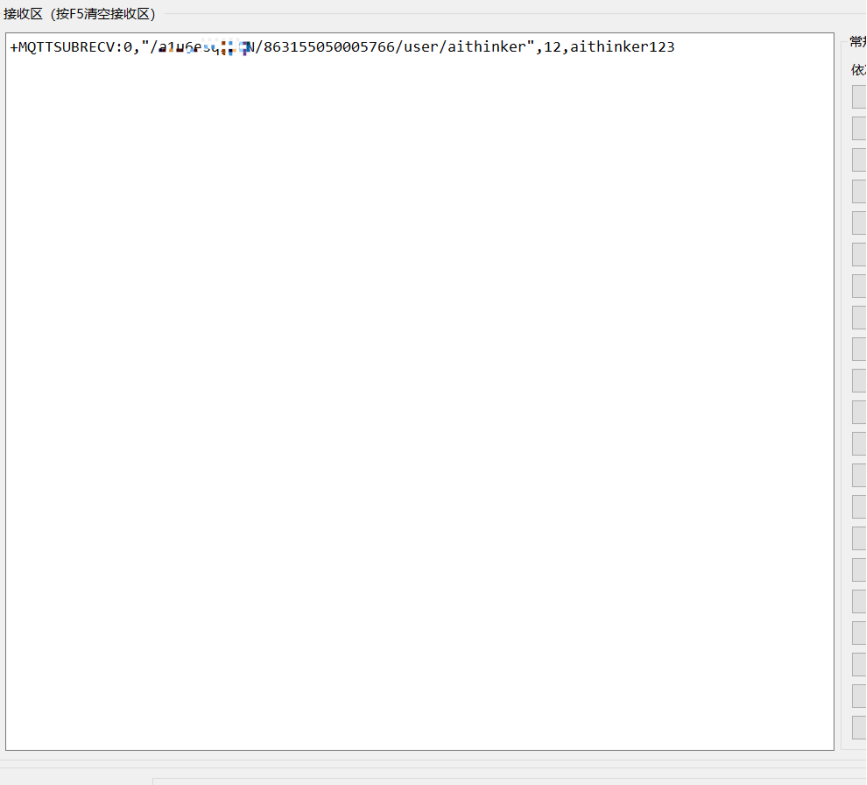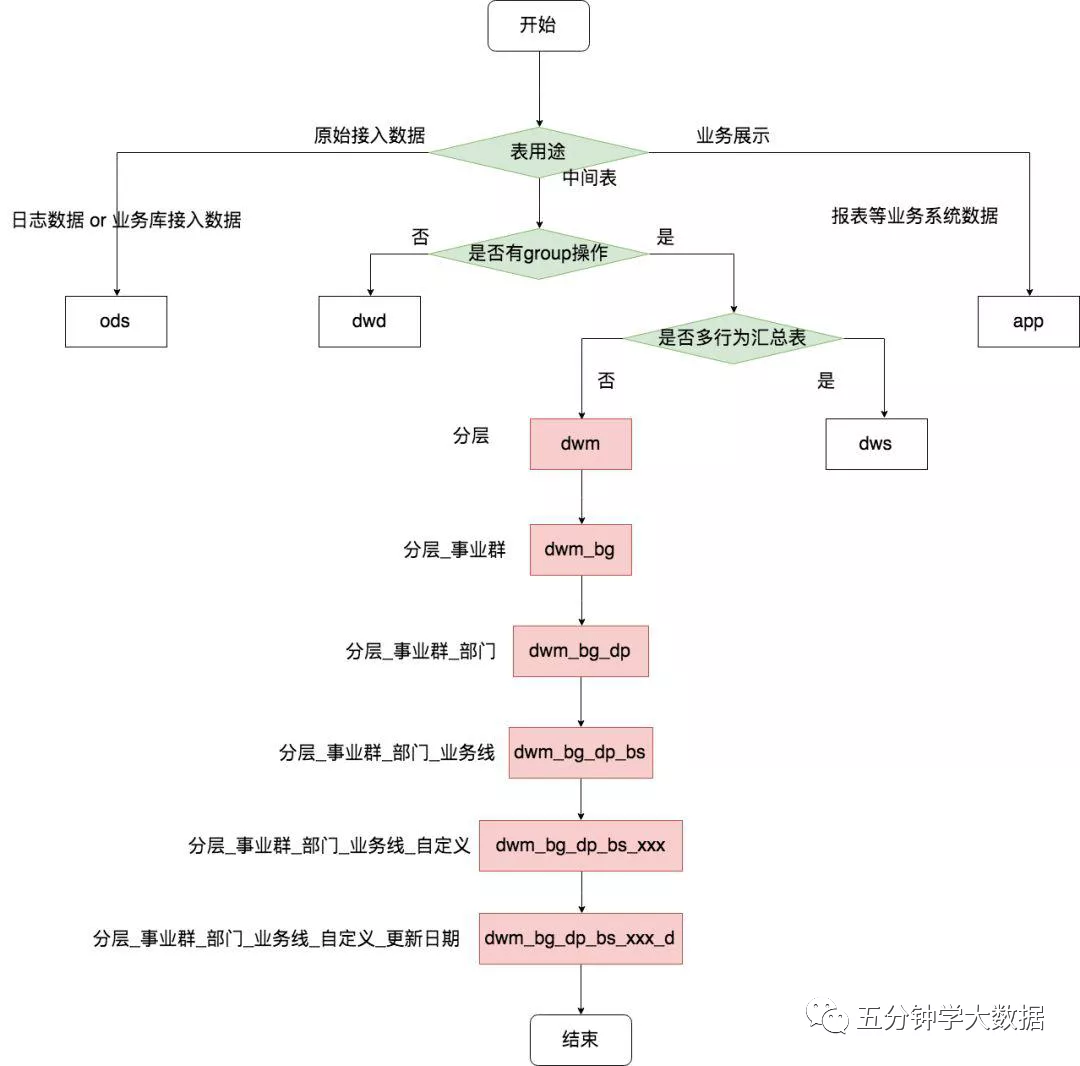一、概述
📖 1、什么是动态SQL?
- 根据不同条件生成不同的SQL语句,是mybatis的一大优势。
- 用于动态拼接SQL语句
📖 2、如何实现动态SQL?
- mybatis 为我们提供了一些标签,在写SQL语句的时候,合理的使用这些标签可以提高SQL语句的效率
- 该部分都用于Mapper映射文件的SQL语句中
- 本章节内容概述:
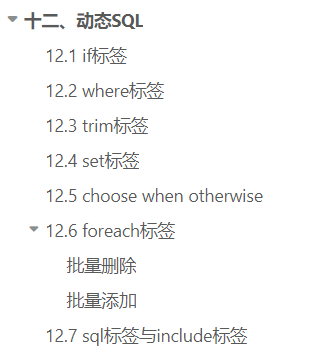
📖 3、准备工作:
- 创建一个新模块:mybatis-009-dynamic-sql【Maven模块】
- 修改 pom.xml 文件 – 打包方式jar、–引入依赖 mysql驱动、mybatis、junit、logback
- 目录结构:
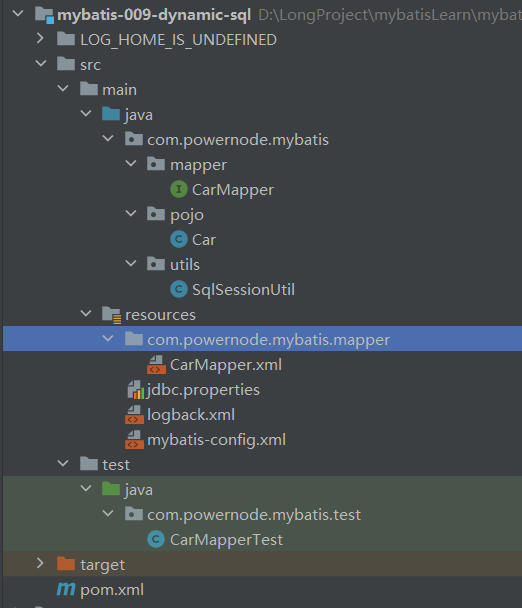
- 文件说明:
| 文件名 | 作用 |
|---|---|
| CarMapper | 数据库操作接口 |
| CarMapper.xml | 映射文件 |
| Car | POJO类 |
| SqlSessionUtil | 工具类 |
| jdbc.properties | 保存mysql账户信息 |
| logback.xml | 日志配置文件 |
| mybatis-config.xml | 核心配置文件 |
| CarMapperTest | 单元测试文件 |
- CarMapper、CarMapper.xml、CarMapperTest三个文件在本篇学习过程中不断更新,其他文件不动
- 普通Java类 – Car
package com.powernode.mybatis.pojo;
/**
* @author Bonbons
* @version 1.0
*/
public class Car {
private Long id;
private String carNum;
private String brand;
private Double guidePrice;
private String produceTime;
private String carType;
//提供构造方法
public Car(){}
public Car(Long id, String carNum, String brand, Double guidePrice, String produceTime, String carType) {
this.id = id;
this.carNum = carNum;
this.brand = brand;
this.guidePrice = guidePrice;
this.produceTime = produceTime;
this.carType = carType;
}
//提供get和set方法
public Long getId() {
return id;
}
public void setId(Long id) {
this.id = id;
}
public String getCarNum() {
return carNum;
}
public void setCarNum(String carNum) {
this.carNum = carNum;
}
public String getBrand() {
return brand;
}
public void setBrand(String brand) {
this.brand = brand;
}
public Double getGuidePrice() {
return guidePrice;
}
public void setGuidePrice(Double guidePrice) {
this.guidePrice = guidePrice;
}
public String getProduceTime() {
return produceTime;
}
public void setProduceTime(String produceTime) {
this.produceTime = produceTime;
}
public String getCarType() {
return carType;
}
public void setCarType(String carType) {
this.carType = carType;
}
//重写toString方法
@Override
public String toString() {
return "Car{" +
"id=" + id +
", carNum='" + carNum + '\'' +
", brand='" + brand + '\'' +
", guidePrice=" + guidePrice +
", produceTime='" + produceTime + '\'' +
", carType='" + carType + '\'' +
'}';
}
}
- 工具类:SqlSessionUtil
package com.powernode.mybatis.utils;
import org.apache.ibatis.io.Resources;
import org.apache.ibatis.session.SqlSession;
import org.apache.ibatis.session.SqlSessionFactory;
import org.apache.ibatis.session.SqlSessionFactoryBuilder;
import java.io.IOException;
/**
* @author Bonbons
* @version 1.0
*/
public class SqlSessionUtil {
private SqlSessionUtil(){}
//定义一个SqlSession
private static final SqlSessionFactory sqlSessionFactory;
//在类加载的时候初始化SqlSessionFactory
static {
try {
sqlSessionFactory = new SqlSessionFactoryBuilder().build(Resources.getResourceAsStream("mybatis-config.xml"));
} catch (IOException e) {
throw new RuntimeException(e);
}
}
//定义一个全局的ThreadLocal,可以保证一个SqlSession对应一个线程
private static ThreadLocal<SqlSession> local = new ThreadLocal<>();
//通过一个公有的方法为外部提供会话的对象 >> 确保同一个线程操作的是同一个连接对象
public static SqlSession openSession(){
//我们用local去获取会话
SqlSession sqlSession = local.get();
//如果当前没有开启的会话就去创建一个,如果get到了就用这个[确保我们操作的是同一个连接对象]
if(sqlSession == null){
sqlSession = sqlSessionFactory.openSession();
//将SqlSession对象绑定到当前线程上
local.set(sqlSession);
}
return sqlSession;
}
/**
* 关闭SqlSession对象并从当前线程中解绑
* @param sqlSession 会话对象
*/
public static void close(SqlSession sqlSession){
if(sqlSession != null){
sqlSession.close();
local.remove();
}
}
}
- properties文件 :jdbc.properties
jdbc.driver = com.mysql.cj.jdbc.Driver
jdbc.url = jdbc:mysql://localhost:3306/powernode
jdbc.username = root
jdbc.password = 111111
- 日志配置文件:logback.xml
<?xml version="1.0" encoding="UTF-8"?>
<configuration debug="false">
<!-- 控制台输出 -->
<appender name="STDOUT" class="ch.qos.logback.core.ConsoleAppender">
<encoder class="ch.qos.logback.classic.encoder.PatternLayoutEncoder">
<!--格式化输出:%d表示日期,%thread表示线程名,%-5level:级别从左显示5个字符宽度%msg:日志消息,%n是换行符-->
<pattern>%d{yyyy-MM-dd HH:mm:ss.SSS} [%thread] %-5level %logger{50} - %msg%n</pattern>
</encoder>
</appender>
<!-- 按照每天生成日志文件 -->
<appender name="FILE" class="ch.qos.logback.core.rolling.RollingFileAppender">
<rollingPolicy class="ch.qos.logback.core.rolling.TimeBasedRollingPolicy">
<!--日志文件输出的文件名-->
<FileNamePattern>${LOG_HOME}/TestWeb.log.%d{yyyy-MM-dd}.log</FileNamePattern>
<!--日志文件保留天数-->
<MaxHistory>30</MaxHistory>
</rollingPolicy>
<encoder class="ch.qos.logback.classic.encoder.PatternLayoutEncoder">
<!--格式化输出:%d表示日期,%thread表示线程名,%-5level:级别从左显示5个字符宽度%msg:日志消息,%n是换行符-->
<pattern>%d{yyyy-MM-dd HH:mm:ss.SSS} [%thread] %-5level %logger{50} - %msg%n</pattern>
</encoder>
<!--日志文件最大的大小-->
<triggeringPolicy class="ch.qos.logback.core.rolling.SizeBasedTriggeringPolicy">
<MaxFileSize>100MB</MaxFileSize>
</triggeringPolicy>
</appender>
<!--mybatis log configure-->
<logger name="com.apache.ibatis" level="TRACE"/>
<logger name="java.sql.Connection" level="DEBUG"/>
<logger name="java.sql.Statement" level="DEBUG"/>
<logger name="java.sql.PreparedStatement" level="DEBUG"/>
<!-- 日志输出级别,logback日志级别包括五个:TRACE < DEBUG < INFO < WARN < ERROR -->
<root level="DEBUG">
<appender-ref ref="STDOUT"/>
<appender-ref ref="FILE"/>
</root>
</configuration>
- mybatis 核心配置文件:mybatis-config.xml
<?xml version="1.0" encoding="UTF-8" ?>
<!DOCTYPE configuration
PUBLIC "-//mybatis.org//DTD Config 3.0//EN"
"http://mybatis.org/dtd/mybatis-3-config.dtd">
<configuration>
<!--外部资源地址-->
<properties resource="jdbc.properties"></properties>
<settings>
<!--开启自动映射-->
<setting name="mapUnderscoreToCamelCase" value="true"/>
</settings>
<typeAliases>
<!--pojo类包名,自动起简名-->
<package name="com.powernode.mybatis.pojo"/>
</typeAliases>
<environments default="dev">
<environment id="dev">
<transactionManager type="JDBC"/>
<dataSource type="POOLED">
<property name="driver" value="${jdbc.driver}"/>
<property name="url" value="${jdbc.url}"/>
<property name="username" value="${jdbc.username}"/>
<property name="password" value="${jdbc.password}"/>
</dataSource>
</environment>
</environments>
<mappers>
<!--指定xml的目录,加载目录下的所有映射文件,前提要与对应接口在一个目录下-->
<package name="com.powernode.mybatis.mapper"/>
</mappers>
</configuration>
二、if 标签
📖 1、if 标签如何使用?
用于多条件查询,在我们指定的几个条件中,我们可以为该条件传递参数,也可以不使用该查询条件

例如该图:如果我们想使用某个条件来筛选,我们就可以为其传入对应的有效参数
📖 2、if 标签的具体是如何使用的呢?
- if 标签有一个test属性,只有当 test 属性为 true 时,才会拼接if里面的内容到SQL语句中
- test 的属性值我们一般都传入判断当前参数是否有效的布尔表达式【
property != null and property != ''】 - if 语句当中就是我们要拼接的条件表达式
📖 3、那我们如何实现根据品牌、指导价、汽车类型来查询汽车数据呢?
- 要求:根据品牌模糊查询、指导价大于指定的值、汽车类型为我们指定的类型【三个条件同时满足】
- 因为返回的结果可能是多条,所以我们用一个集合来接收,为了使用见名知意的参数名,我们可以添加 @Param 注解【数据库表操作接口】
/**
* 多条件查询,可能使用这个条件,也可能不使用
* @param brand 品牌
* @param guidePrice 指导价
* @param carType 汽车类型
* @return 查询结果的集合
*/
List<Car> selectByMultiCondition(@Param("brand") String brand, @Param("guidePrice") Double guidePrice, @Param("carType") String carType);
- 有了接口我们就可以去写对应的映射文件:
<select id="selectByMultiCondition" resultType="Car">
select * from t_car where 1=1
<if test="brand != null and brand != ''">
and brand like "%"#{brand}"%"
</if>
<if test="guidePrice != null and guidePrice != ''">
and guide_price > #{guidePrice}
</if>
<if test="carType != null and carType != ''">
and car_type = #{carType}
</if>
</select>
为什么这里要添加 1 = 1 呢?
(1)因为如果 没有 if 标签有效的话,该SQL底层末尾的情况是这样的
select * from t_car where,很明显是个错误的语法
(2)添加1=1之后,条件都为空就会输出全部的汽车数据
- 接下来在测试类中写个单元测试方法调试一下【考虑空值,可以有8种输入,经测试全部通过】
@Test
public void testSelectByMultiCondition(){
SqlSession sqlSession = SqlSessionUtil.openSession();
CarMapper mapper = sqlSession.getMapper(CarMapper.class);
List<Car> cars = mapper.selectByMultiCondition("奔驰", 55.0, "燃油车");
cars.forEach(car -> System.out.println(car));
sqlSession.close();
}

三、where 标签
- where 标签可以让SQL子句更加智能
- 可以自动去除前面多余的 and/or
- 如果没有条件成立就不拼接 where
- 使用起来非常简单,就是在if 标签集合外部套一个where标签
- 仍然使用上一个案例:品牌、价格、汽车类型查询汽车数据
(1)接口中的方法
/**
* 使用where标签,让我们的子句更加智能化
* @param brand
* @param guidePrice
* @param carType
* @return
*/
List<Car> selectByMultiConditionWithWhere(@Param("brand") String brand, @Param("guidePrice") Double guidePrice, @Param("carType") String carType);
(2)映射文件中的SQL
<select id="selectByMultiConditionWithWhere" resultType="Car">
select * from t_car
<!--如果if标签没有成立的,就不会生成where关键字-->
<where>
<if test="brand != null and brand != ''">
brand like "%"#{brand}"%"
</if>
<if test="guidePrice != null and guidePrice != ''">
guide_price > #{guidePrice}
</if>
<if test="carType != null and carType != ''">
car_type = #{carType}
</if>
</where>
</select>
(3)测试类中的单元测试方法
@Test
public void testSelectByMultiConditionWithWhere(){
SqlSession sqlSession = SqlSessionUtil.openSession();
CarMapper mapper = sqlSession.getMapper(CarMapper.class);
List<Car> cars = mapper.selectByMultiConditionWithWhere("", null, "");
cars.forEach(car -> System.out.println(car));
sqlSession.close();
}
实际生成的SQL语句如下,并且成功查询出所有的数据

四、trim 标签
-
trim 标签的优势是:动态的添加、删除前缀和后缀
-
为什么需要这么做呢?
- 上面if标签我们直接演示的是成功的案例,可能存在前面或后面有不应该出现的 and 或 or
- 我们可以动态的添加前缀和后缀,这个标签也是结合 if 标签使用的
-
trim 标签的组成:
- prefix 属性:添加指定前缀
- suffix 属性:添加指定后缀
- prefixOverrides 属性:去除指定前缀
- suffixOverrides 属性:去除指定后缀
-
依旧采用根据品牌、价格、汽车类型筛选汽车数据
(1)接口方法:
/**
* 使用trim标签
* @param brand
* @param guidePrice
* @param carType
* @return
*/
List<Car> selectByMultiConditionWithTrim(@Param("brand") String brand, @Param("guidePrice") Double guidePrice, @Param("carType") String carType);
(2)SQL 语句:
<select id="selectByMultiConditionWithTrim" resultType="Car">
select * from t_car
<trim prefix="where" suffixOverrides="and | or">
<if test="brand != null and brand != ''">
brand like "%"#{brand}"%" and
</if>
<if test="guidePrice != null and guidePrice != ''">
guide_price > #{guidePrice} or
</if>
<if test="carType != null and carType != ''">
car_type = #{carType} and
</if>
</trim>
</select>
(3)测试方法:【根据SQL和此处参数得知:要筛选大于55万的奔驰车或所有燃油车】
@Test
public void testSelectByMultiConditionWithTrim(){
SqlSession sqlSession = SqlSessionUtil.openSession();
CarMapper mapper = sqlSession.getMapper(CarMapper.class);
List<Car> cars = mapper.selectByMultiConditionWithTrim("奔驰", 55.0, "燃油车");
cars.forEach(car -> System.out.println(car));
sqlSession.close();
}
测试结果:查询成功

五、Set 标签
-
可以生成 set 关键字和去除末尾的 ,
-
通过条件筛选,可以避免将字段更新为空值
-
通常用于 update 语句,结合 if 标签使用
-
接下来我们用 set 标签更新一条汽车信息
(1)接口方法:
/**
* 更新汽车信息 -- set标签的使用
* @param car
* @return
*/
int updateBySet(Car car);
(2)SQL语句:
<update id="updateBySet">
update t_car
<!--通过指定更新的字段来避免更新空-->
<set>
<!--只有if语句成立的时候才会去更新对应的字段-->
<if test="carNum != null and carNum != ''">car_num = #{carNum},</if>
<if test="brand != null and brand != ''">brand = #{brand},</if>
<if test="guidePrice != null and guidePrice != ''">guide_price = #{guidePrice},</if>
<if test="produceTime != null and produceTime != ''">produce_time = #{produceTime},</if>
<if test="carType != null and carType != ''">car_type = #{carType}</if>
</set>
</update>
(3)测试方法:
@Test
public void setUpdateBySet(){
SqlSession sqlSession = SqlSessionUtil.openSession();
CarMapper mapper = sqlSession.getMapper(CarMapper.class);
mapper.updateById(new Car(2L, null, 75.0, null, null, ""));
sqlSession.commit();
sqlSession.close();
}
(4)测试结果:我们指向更新id为2的汽车的价格,更新前

更新后:


六、choose when otherwise 标签
- 这是类似于 if – else if – else 的语法 >> 最终只会选择一条子句拼接到SQL中
- 先根据品牌查询,如果没有提供品牌,再根据指导价格查询,如果没有提供指导价格,就根据汽车类型查询。【三者中选一个条件进行查询】
(1)接口方法:
/**
* 使用 choose when otherwise 标签
* @param brand
* @param guidePrice
* @param carType
* @return
*/
List<Car> selectByChoose(@Param("brand") String brand, @Param("guidePrice") Double guidePrice, @Param("carType") String carType);
(2)SQL语句:
其实这里可以将where标签直接替换成where关键字,因为一定会拼接一个查询条件的【使用了otherwise标签】
<select id="selectByChoose" resultType="Car">
select * from t_car
<where>
<choose>
<when test="brand != null and brand != ''">
brand like "%"#{brand}"%"
</when>
<when test="guidePrice != null and guidePrice != ''">
guide_price > #{guidePrice}
</when>
<otherwise>
car_type = #{carType}
</otherwise>
</choose>
</where>
</select>
(3)测试方法:
@Test
public void testSelectByChoose(){
SqlSession sqlSession = SqlSessionUtil.openSession();
CarMapper mapper = sqlSession.getMapper(CarMapper.class);
List<Car> cars = mapper.selectByChoose("", 22.0, "电动车");
cars.forEach(car -> System.out.println(car));
sqlSession.commit();
sqlSession.close();
}
(4)测试结果:查询成功

七、foreach 标签
- 用于通过循环来完成某种操作,批量删除、批量添加
- foreach 标签的组成:
- collection 属性:传入的数组或集合
- item 属性:数组或集合中的一个元素
- separator 属性:分隔符
- open 属性:foreach标签中所有内容的开始 “(”
- close 属性:foreach标签中所有内容的结束 “)”
1、根据id组成的数组来完成批量删除:
(1)接口方法
/**
* 批量删除
* @param ids 我们要删除的id数组
* @return 删除记录的条数
*/
int deleteByIds(@Param("ids") Long [] ids);
(2)SQL语句:
<delete id="deleteByIds">
delete from t_car where id in(
<foreach collection="ids" item="id" separator=",">
<!--与item对应,代表我们从数组中取出的元素-->
#{id}
</foreach>
)
</delete>
(3)测试方法:
@Test
public void testDeleteByIds(){
SqlSession sqlSession = SqlSessionUtil.openSession();
CarMapper mapper = sqlSession.getMapper(CarMapper.class);
Long [] ids = {27L, 28L};
int count = mapper.deleteByIds(ids);
System.out.println(count);
sqlSession.commit();
sqlSession.close();
}
(4)测试结果:成功删除指定id的数据
2、根据传入的汽车数据集合批量插入
(1)接口方法
/**
* 批量插入,一次插入多条汽车信息
* @param cars 待插入的数据集合
* @return 插入成功的数据条数
*/
int insertBatch(@Param("ids") List<Car> cars);
(2)SQL语句:
<insert id="insertBatch">
insert into t_car values
<foreach collection="cars" item="car" separator=",">
(null, #{car.carNum}, #{car.brand}, #{car.guidePrice}, #{car.produceTime}, #{car.carType})
</foreach>
</insert>
(3)测试方法:
@Test
public void testInsertBatch(){
SqlSession sqlSession = SqlSessionUtil.openSession();
CarMapper mapper = sqlSession.getMapper(CarMapper.class);
// 创建我们的数据集合
List<Car> cars = new ArrayList<>();
cars.add(new Car(null, "100", "梅赛德斯", 66.0, "2022-11-07", "燃油车"));
cars.add(new Car(null, "101", "奥迪A8", 67.0, "2022-11-07", "燃油车"));
cars.add(new Car(null, "102", "宾利", 68.0, "2022-11-07", "燃油车"));
// 调用我们的方法插入数据
mapper.insertBatch(cars);
// 提交事务、管理连接
sqlSession.commit();
sqlSession.close();
}
(4)测试结果:插入数据成功


八、sql 标签与 include 标签
- 这两个标签一般配合使用,可以提高代码的复用率、易维护
- 利用 sql 标签来声明sql片段, 它有个id属性标识唯一的sql
- include标签可以导入sql片段在SQL语句中直接使用,使用refid属性指明用那个sql即可
<sql id="carCols">id,car_num carNum,brand,guide_price guidePrice,produce_time produceTime,car_type carType</sql>
<select id="selectAllRetMap" resultType="map">
select <include refid="carCols"/> from t_car
</select>
